Beekeeping, also known as apiculture, is the care and management of bee colonies using man-made hives. Beekeeping farming is an important agricultural industry in Canada, producing honey and other bee products.
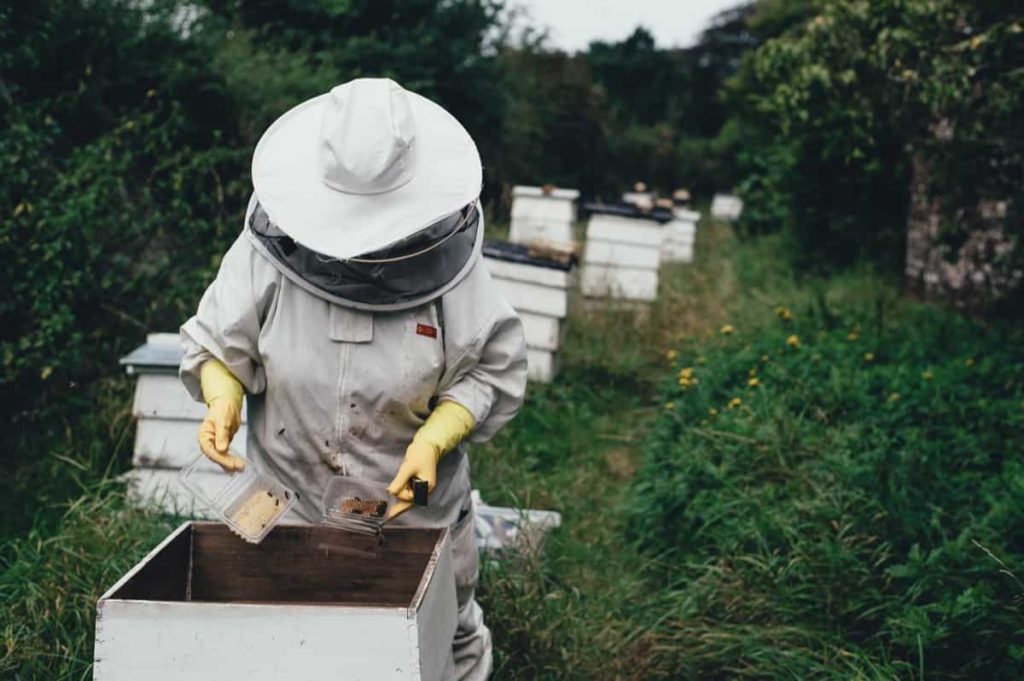
How to start Beekeeping in Canada
How profitable is beekeeping in Canada?
Today, there are more than 13,000 beekeepers across Canada, producing $188 million in honey annually. More than 80 percent of this honey comes from the Prairie Provinces, where bees do double duty as honey producers and pollinators for crop production. There are approximately 13,000 beekeepers operating a total of 810,000 bee colonies in Canada. Pollinators are organisms that mainly help transfer pollen from one flowering plant to another.
It fertilizes plants so they can produce seeds and fruits. With over 800 native species in Canada, bees are the common pollinator. Other pollinators include butterflies, moths, wasps, bees, some types of beetles, hummingbirds, and some bats. Bees and insect pollinators are important to the production of many crops and play an essential ecological role. Crops that depend on pollinators include tree and berry fruits, canola, alfalfa, squash, and melons.
How much does a bee hive cost in Canada?
Finally, when someone wants to know the average start-up costs for a beekeeper buying only bees (in exchange for keeping a swarm) to spend around $500 for the first hive and expect to pay around $300 for each additional hive. The best method is to start slowly with a few hives and learn all you can about beekeeping. Don’t increase your bees too quickly. Instead, enjoy your bees and take time learning the craft of beekeeping. Once you gain experience and understand how to manage your bees, you are ready to become a successful beekeeping business owner.
What is the most common bee in Canada?
Bumblebees are the most recognizable bees in Canada. Bumblebees feed on the nectar of flowering plants and collect pollen to feed their young. They visit many flowers to collect pollen, storing it in their corbiculae (small pouches on their hind legs).
What kinds of bees can you find in Canada?
Bumblebees – Although they do not produce honey, they are essential pollinators for fruit and vegetable crops. These are one of the few bees that can pollinate plants inside a greenhouse. Because of this talent, they have been bred commercially to raise tomato plants for food crops.
In case you missed it: 17 Key Rules for Effective Beekeeping Management: Basic Tips for Profitable Honeybee Farming
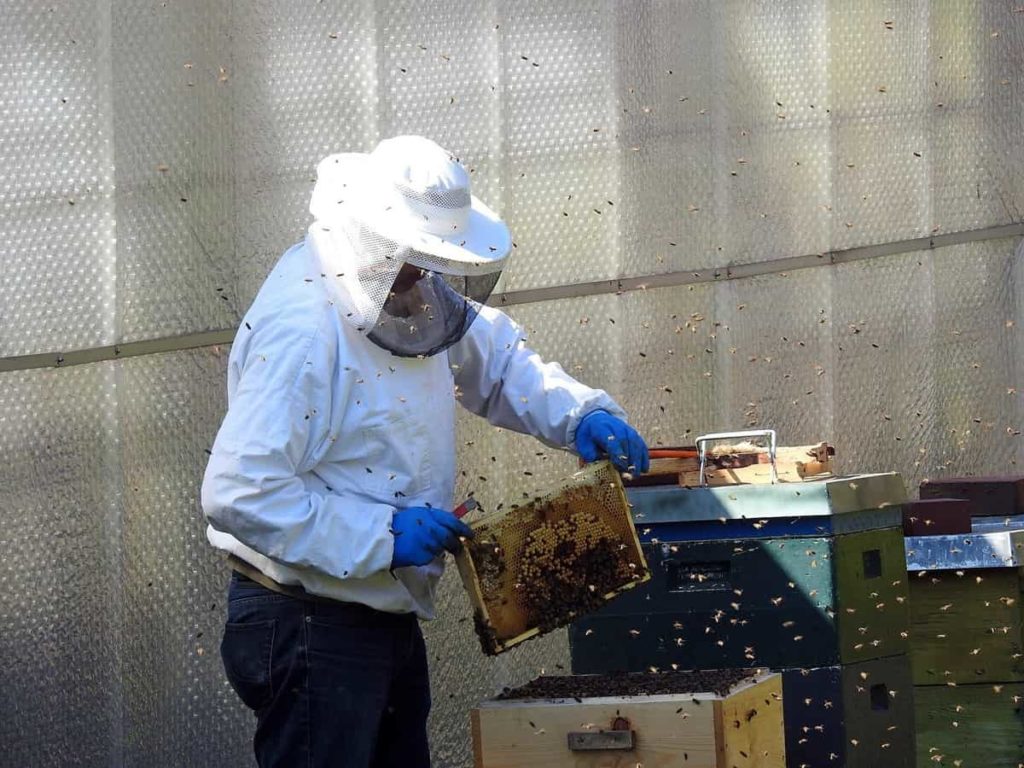
European (Western) Bees – They are the only group of bees that produce honey, and in fact, they have a ton of other unique characteristics. The Apis mellifera species, known as the western honey bee, is commercially bred.
Large Carpenter Bees – These are important pollinators of many plants. Fruit trees, wildflowers, and garden plants rely on carpenter bees to help pollinate and produce new offspring.
Small Carpenter Bees – Small carpenter bees are black with a green or blue tint and prefer to nest in the hollow stems of plants such as Raspberry or Sumac Bushes.
Long-Horned Bees – This group of bees nests in holes dug by the female, usually under bushes. Look for longhorn bees in wildflower meadows or sunflowers, two of the main flower groups they pollinate. Some bees are specialist pollinators and only visit sunflowers. Occasionally, they will also visit melon, squash, and cotton plants, which will help pollinate those crops.
Sweet Bees – Sweat bees are harmless. Even if they sting, it’s mild and painless compared to other bees. These insects love sweat because they need to consume extra salt to survive, and our sweat is the perfect salty snack for these little bees.
Can you bee keep it in Canada?
Currently, there are approximately 7,000 beekeepers in Canada, three-quarters of which are registered in the provinces of Ontario (31%), British Columbia (26%), and Saskatchewan (15%). A beekeeper is mainly involved in every aspect of beekeeping, propagation, and production. Beekeepers need to ensure that their hives remain healthy and productive. To do this, the beekeeper needs to keep records and carefully monitor the welfare and numbers of his bees. They must also maintain the hive and harvest honey and other bee products.
What crops do bees pollinate in Canada?
- Crops that depend on pollinators include tree and Berry Fruits, Canola, Alfalfa, Squash, and Melons. Most commercial beekeepers in these provinces are engaged in pollination services for the horticultural industry, particularly blueberries and apples.
- Bees are essential for pollinating fruits, vegetables, and hybrid canola seeds. Well-pollinated crops produce more fruit, and bees increase yields 2-8 times. The value of bees for crop pollination is estimated at more than $2 billion annually.
- Canada ranks first in the world in canola production. Canola pollination is an essential activity for the Canadian bee industry. Each year approximately 300,000 bee colonies (half of the colonies in Canada) contribute to the annual crop of 12.6 million tons of open-pollinated canola oilseed. Another 80,000 colonies (about 12% of colonies in Canada) are also dedicated to pollinating the highly specialized hybrid seed canola industry. This hybrid seed industry depends on bees to transfer the correct pollen of specific genetic lines.
- Canada ranks second in the world in blueberry production. (North America produces 75% of the world’s blueberries). Beekeepers provide about 35,000 bee colonies for blueberry pollination.
- Canada ranks 16th in apple production, and bees provide about 15,000 colonies for pollinating fruit trees.
In case you missed it: How to Start Honey Bee Farming/Beekeeping from Scratch: A Complete Guide for Beginners
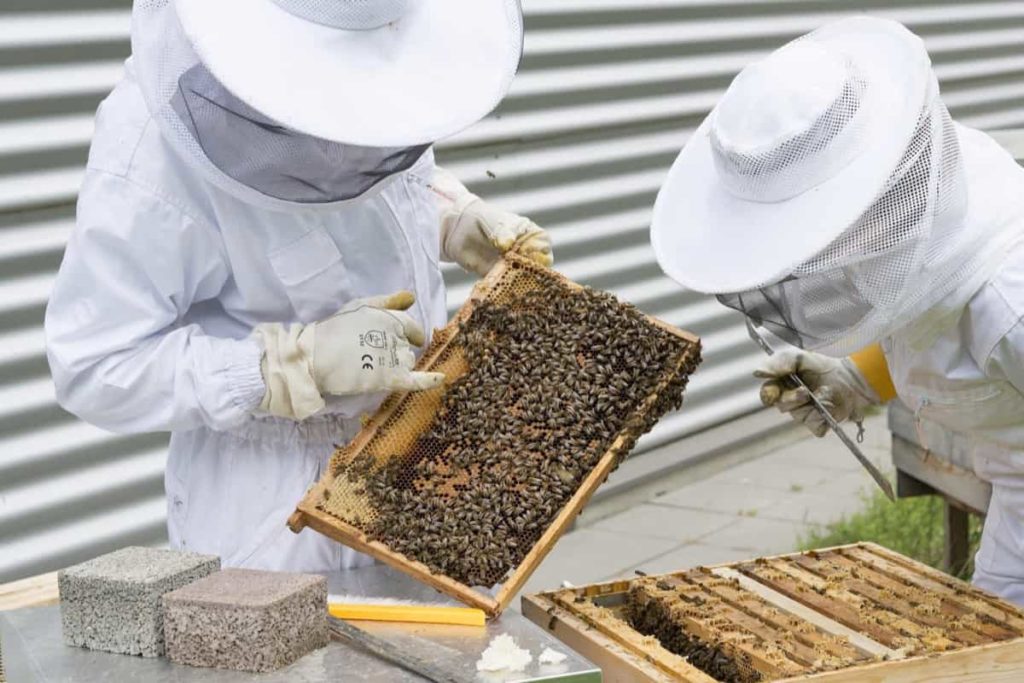
Why are bees dying in Canada?
Beekeepers say the most significant cause of bee deaths is the varroa mite, a tiny parasite that eats bees and has been in Canada. It’s a very serious threat. It’s a parasite that’s been with bees for years.
Where are bees dying the most in Canada?
A Canadian Association of Professional Apiculturists survey found that Ontario has the highest winter honeybee mortality rate at 38 percent. Last winter, an average of 16.4 percent of bees died nationally. Declines in bee and other pollinator populations across Canada and the US have generated considerable international scientific and public interest. However, several factors are seen as potential contributors to these declines, and no single factor has been identified as the cause.
The available science suggests that several factors can act together, including loss of habitat and food sources, diseases, viruses and insects, and pesticide exposure. Some pesticides pose an immediate threat to bees. Some have long-term “chronic” effects. Health Canada assesses pesticides’ acute and chronic risks to adult and larval bees. To protect pollinators, the pesticide labels that pose such risks provide detailed instructions for use to minimize potential exposure. These include restrictions on pesticides on flowering crops or weeds where bees may be present.
How many beehives make a living?
A full-time living as a beekeeper would need at least 500+ bees. It will take a diversified approach and not rely solely on honey farming. Growing business slowly is recommended to gain experience and scale properly by applying sound bee management techniques.
Bee Season – In the Prairie Provinces, honey production lasts four months (May-August). Quebec and northern NB also have a short season (mid-May to mid-September). In other regions, the active season is April-October (longer for coastal BC).
Do you need a license to keep bees in Canada?
You don’t need a license to keep bees, but it’s good to join a local association to keep you in touch with local experts, issues, and conditions. These groups will often run training programs, hold regular meetings and send out regular newsletters.
How do I start bee farming in Canada?
- Many people get into beekeeping because they are interested in bees and are looking for a hobby that will benefit their garden and the environment. Then, others are after the delicious honey and other bee products you can get from your bees.
- Approach it like any other business venture when you start beekeeping for profit. One of the first things you want to consider is the cost of beekeeping. Beekeeping has many costs, including the initial cost of building the hive, ongoing maintenance, packaging, and marketing costs.
Steps to get started;
1. Join a local beekeepers association – There is no better first step for those wanting to start beekeeping than joining a beekeepers association. Most associations, new and experienced beekeepers, meet regularly to share information and insights. Most have beekeeping magazines, books, and videos for loan and bring in expert speakers.
2. Start small (but not too small) – Even if you plan to expand or have little or no experience, it’s a good idea to start with two or three hives. It will give you an idea of what it takes, how your niche works, and whether you like it or not. Keeping just one is not recommended, as having two or more for competition and equalizing winter stores and populations to succeed over winter is useful.
In case you missed it: Bee Farming in South Africa: How to Start, Beekeeping Cost, and Profit
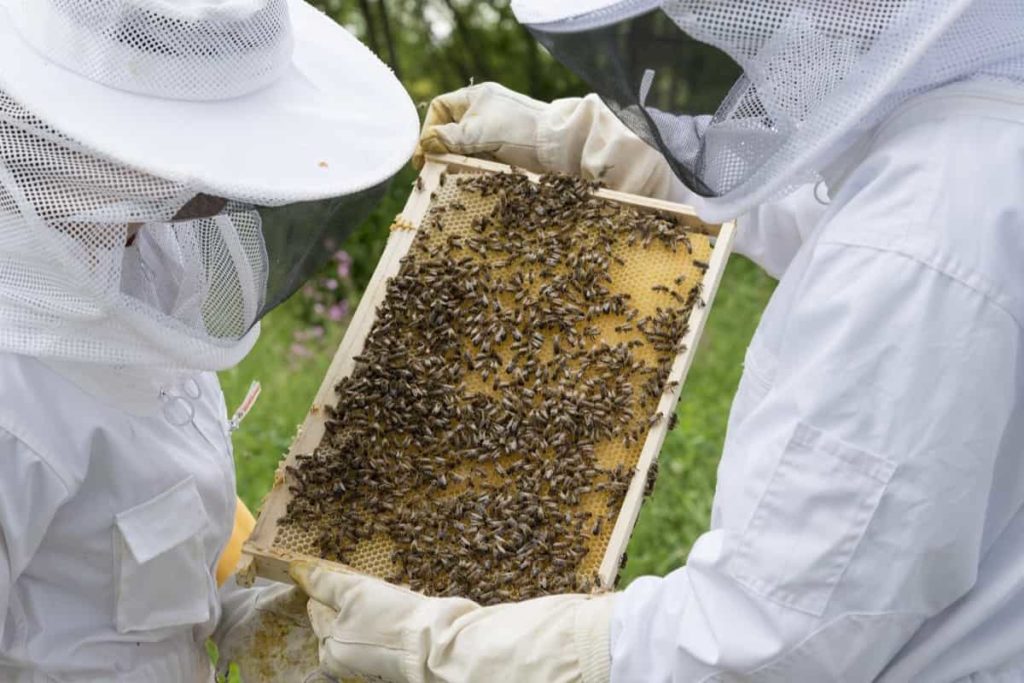
3. Make a plan – When you start beekeeping, there are many things to think about: your budget, where you will get the bees, what kind of bees you will be using, and what kind of equipment, how you will manage your hive, what kind of records you will keep, etc., and there is the aspect of honey farming. It doesn’t have to be fancy, but you feel a lot more confident if you’re not flying by the seat of your pants all the time.
4. Consider your equipment – There are more options in equipment than you might think, especially in hive components. You’ll want to consider your physical ability and the pros and cons of different options because this is a significant financial investment, and you’ll live with the decisions you make for a long time. The most common hive bodies used are “standard” sized devices, but increasingly, beekeepers are working with medium-sized hives, and some even use 8-frame components. There have been, although they are hard to find in Canada.
5. Get some experience – Handling bees are dangerous, and you must know the basics before starting your hive. The experience may not be extensive, but it is enough to give you confidence when handling bees, which is an essential part of beekeeping. Taking the time and learn this skill properly before building your hive is important.
6. Choose a location – When you feel ready to get your bee farm up and running, the first step is to choose a location. Since bees pose a threat, it’s best to talk to neighbors and tell them about your plans. You can also check local ordinances and regulations to ensure you’re working within them. When choosing your location, keep in mind that bees thrive in sunny areas that are quiet and away from people. Also, it can make your job easier if there is room to move around the hive. Moving beehives is not easy, so it’s best to take your time and choose a suitable location the first time.
How do bees survive Canadian winters?
Although bees are kept in hives and are often selected and bred for superior honey-producing qualities, they cannot be considered fully domesticated as many animals are. They retain their wild instincts and can only be managed within boundaries. Most Canadian beekeepers winter their hives. In winter, bees huddle together and generate enough heat to keep the body warm. The beekeeper ensures that the bees have enough food and protection from the cold to thermoregulate.
Most bee colonies overwinter outside, but some are moved to unheated cellars (especially in Quebec). Beekeepers on the Prairies killed their bees in the fall and bought packaged bees (one queen and about 10,000 workers in a screen cage) from South America in the spring. It ended with the closure of the border between Canada and the USA to the importation of bees after mite diseases spread throughout the United States. Prairie beekeepers now winterize their bees, sometimes in special over-wintering sheds.
How many beehives do I need to make a profit?
- The start-up costs for beekeeping are not too high compared to many other businesses, and it is well worth considering all the benefits and potential profits of beekeeping.
- Beekeepers with about 300 or more hives are commercial beekeepers, and their beekeeping businesses can be very profitable.
- Many commercial beekeepers move their colonies to provide pollination services to farmers and provide their bees with abundant nectar sources for honey production.
What does a bee farmer do?
Most beekeepers are responsible for caring for the bees and harvesting the honey products they produce, while a small number of beekeepers work in crop pollination or scientific research. Beekeepers generally perform the following tasks:
- Monitoring the activity and health of bees and hives
- Building bees
- Move the hive so that they are in the best place for pollination
- Raising bees to produce honey and pollinate crops
- Harvesting honey Inspecting the hive
- Repairing or removing damaged parts of the hive and monitoring for parasites and insects
- Cultivating bee colonies and queens
- Products for sale and market
Where does Canada get its honey?
- Manitoba, Saskatchewan, and Alberta produce 80 percent of Canada’s honey crop. Honey is produced from July to August.
- Canada’s average honey production per hive is double the world average due to our long, hot summer days and abundant supply of nectar-producing crops. Alberta, Saskatchewan, and Manitoba’s prairie provinces are Canada’s major honey producers. About 533,000 (69%) colonies are located in the Prairie Provinces and produce 79% of Canada’s crop.
- Commercial prairie beekeepers maintain 500 – 13,000 colonies with an average of 2,000. Pollination of hybrid canola is important in Alberta, where 80,000 colonies are required for seed production.
In case you missed it: How to Start Beekeeping in Australia: For Beginners, Courses, Rules, and Regulations
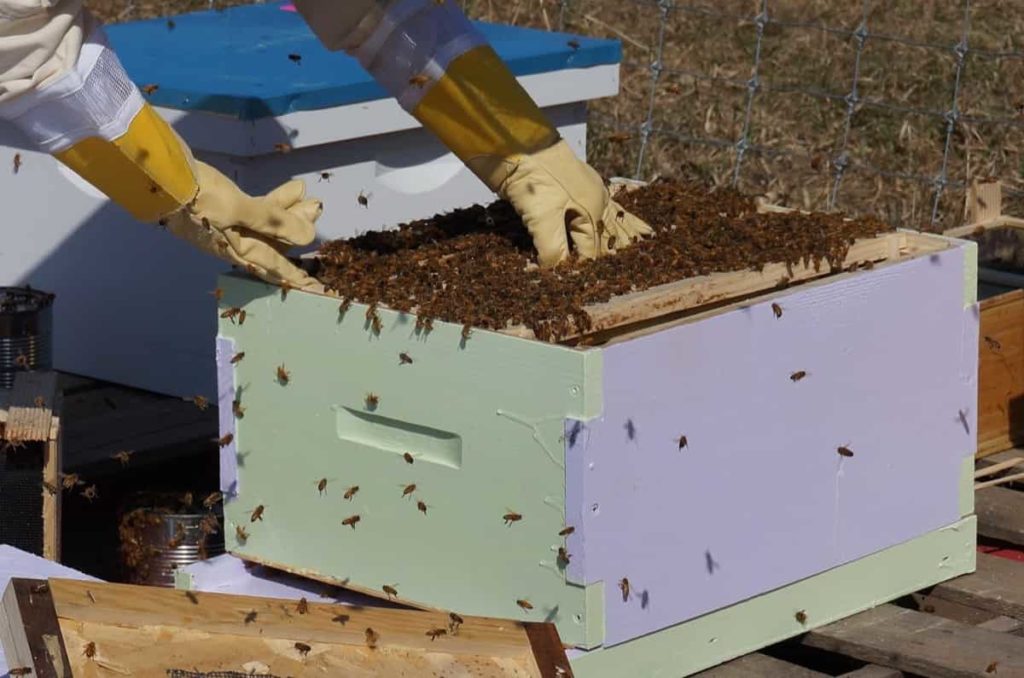
Do you need a license to sell honey in Canada?
Honey can be sold at the door or at farmer’s markets without a food inspection permit. Labeling requirements vary from province to province, but the label on the container must generally indicate the producer’s name, contact details, and the weight of the honey being sold.
Federal Involvement in Bees and Beekeeping business
Regulatory responsibilities are mainly administered by the federal government under various laws and include:
- Importation of bees and bee-related products into Canada. In consultation with the provinces, the Canadian Food Inspection Agency (CFIA) determines approved sources from which bees may be imported.
- Regulations related to processing and marketing of honey. CFIA administers various laws and regulations to ensure food safety and the quality of honey across the country.
- Registration and use of pesticides and medicines in bee colonies to control diseases. Health Canada’s Pest Management Regulatory Agency (PMRA) is mainly responsible for farm chemicals and pesticides. The CFIA regulates the registration, distribution, and use of veterinary drugs.
- Canadian beekeepers passionately raise their hives and support their communities. Several local and regional organizations provide tools and support, and local knowledge to any budding Canadian beekeeper.
Where are the most bees in Canada?
Alberta, Saskatchewan, and Manitoba together account for 69% of the nation’s total bee colonies and 79% of total honey production.
How much honey does an average hive produce?
- Canada’s average honey production per hive is double the world average due to our long, hot summer days and abundant supply of nectar-producing crops.
- The honey market is well developed in Canada, with products sold through several domestic and international channels for use in food, medicinal, therapeutic, and other industrial applications. Generally, honey marketing channels include retailers, cooperative associations, packers and dealers, food manufacturers, consumers, or export markets.
- Selling honey directly to consumers is common among beekeepers, especially hobbyists and part-timers. Beekeepers sell their honey at apiaries, roadside stands, or farmers’ markets—producers who sell to retailers and handle honey products according to each retailer’s needs. To market honey through cooperatives, producers usually have to be members and be able to supply a certain amount of product.
- Bulk honey is usually sold to packers, who then package the honey products using their label. However, in some cases, producers choose to develop their labels and sell their honey directly to retailers instead of packers.
Do you need a permit to keep bees in Ontario?
Ontario beekeepers are prohibited from selling live bees or used beekeeping equipment within Ontario, or at any time changing ownership, from another Canadian province or internationally. But a valid permit is required to import bees into Ontario. Keeping bees in Ontario is a regulated activity under the Ontario Bees Act. The Ontario Bees Act aims to protect the bee’s health, especially from pests and diseases. Regulations for keeping bees in Ontario include, but are not limited to:
- Registration of beekeepers
- Obligation to report pests and diseases
- Permits
- The location where bees may be kept
- Apiary indicators
- Requirements for clearing dead colonies
- Actions to be taken by the Ministry and beekeeper in case of pests and disease or non-compliance is found.
In case you missed it: How To Start Beekeeping For Beginners
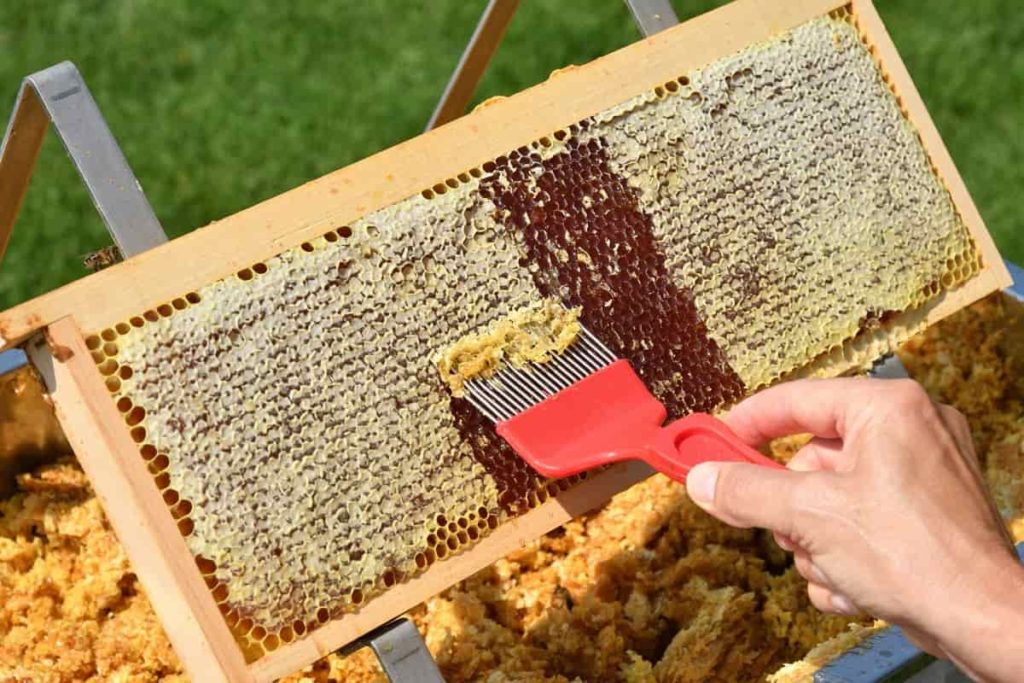
Anyone who owns or possesses beehives or uses beekeeping equipment in Ontario needs a valid certificate of registration from OMAFRA’s Apiary Program. As a beekeeper, you should register yourself and the location(s) where bees or equipment are kept. The Provincial Apiarist maintains all beekeepers register in Ontario and helps the Apiary Program effectively administer the Bees Act and its apiary inspection program.
How much do bee farmers make in Canada?
The average salary for beekeepers in Canada is $28,519 per year or $14.63 per hour. Entry-level positions start at $25,545 per year, while most experienced workers earn up to $35,100 per year.
Conclusion
Canada is the sixth largest honey producer in the world. Honey is produced from July to August. Canada’s average honey production per hive is double the world average due to our long, hot summer days and abundant supply of nectar-producing crops. Canada has over 800 species of bees.
- How to Make Houseplants Bushy: Effective Tips and Ideas
- Innovative Strategies for Boosting Coconut Pollination and Yield
- Pollination Strategies for Maximum Pumpkin Yield
- The Complete Guide to Chicken Fattening: Strategies for Maximum Growth
- Natural Solutions for Tulip Problems: 100% Effective Remedies for Leaf and Bulb-Related Issues
- Revolutionizing Citrus Preservation: Towards a Healthier, Greener Future
- Natural Solutions for Peony Leaf and Flower Problems: 100% Effective Remedies
- Maximizing Profits with Avocado Contract Farming in India: A Comprehensive Guide
- Natural Solutions for Hydrangea Problems: 100% Effective Remedies for Leaf and Flowers
- The Ultimate Guide to Choosing the Perfect Foliage Friend: Bringing Life Indoors
- From Sunlight to Sustainability: 15 Ways to Use Solar Technology in Agriculture
- The Ultimate Guide to Dong Tao Chicken: Exploring from History to Raising
- The Eco-Friendly Makeover: How to Convert Your Unused Swimming Pool into a Fish Pond
- Mastering the Art of Delaware Chicken Farming: Essentials for Healthy Backyard Flocks
- 20 Best Homemade Fertilizers for Money Plant: DIY Recipes and Application Methods
- How to Craft a Comprehensive Free-Range Chicken Farming Business Plan
- Brighten Your Flock: Raising Easter Egger Chickens for Beauty and Bounty
- How to Optimize Your Poultry Egg Farm Business Plan with These Strategies
- Subsidy for Spirulina Cultivation: How Indian Government Schemes Encouraging Spirulina Farmers
- Ultimate Guide to Raising Dominique Chickens: Breeding, Feeding, Egg-Production, and Care
- Mastering the Art of Raising Jersey Giant Chickens: Care, Feeding, and More
- Ultimate Guide to Raising Legbar Chickens: Breeding, Farming Practices, Diet, Egg-Production
- How to Raise Welsummer Chickens: A Comprehensive Guide for Beginners
- How to Protect Indoor Plants in Winter: A Comprehensive Guide
- Ultimate Guide to Grow Bag Gardening: Tips, Tricks, and Planting Ideas for Urban Gardeners
- Guide to Lotus Cultivation: How to Propagate, Plant, Grow, Care, Cost, and Profit
- Agriculture Drone Subsidy Scheme: Government Kisan Subsidy, License, and How to Apply Online
- Ultimate Guide to Raising Araucana Chickens: Breed Profile, Farming Economics, Diet, and Care
- Bringing Hydroponics to Classroom: Importance, Benefits of Learning for School Students
- Ultimate Guide to Raising Polish Chickens: Breed Profile, Farming Economics, Diet, and Care
- Ultimate Guide to Raising Australorp Chickens: Profile, Farming Economics, Egg Production, Diet, and Care
- Silkie Chicken Farming: Raising Practices, Varieties, Egg Production, Diet, and Care
- Sussex Chicken Farming: Raising Practices, Varieties, Egg Production, Diet and Care
- Homemade Feed Formulations for Livestock: Discover Cost-effective Starter to Finisher Feed Recipes
- 20 Best Pig Weight Gain Supplements: Top Swine Weight Gain Formulas
- Ultimate Guide to Elderberry Farming: Propagation, Planting, Yield, Cost, and Profit